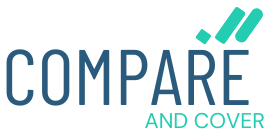Ever Wondered Why Your Health Coverage Feels… Different?
Picture this: you’re scrolling through health plan options, and suddenly you’re bombarded with terms like “regional plan,” “state-specific provider network,” and “in‑network providers.” You live in Ohio today—but what if your work send you to visit Florida next month? Will your care be covered?
It’s confusing—and sometimes scary—when you’re not sure if your health plan will actually cover you when it matters. That’s exactly where regional health coverage steps in: it provides a thoughtful balance between being affordable and giving reasonably broad access to care—but often comes with some limitations you should know about.
Let’s take a journey—covering what these plans are, how they compare, real‑life examples, and whether they might be right for you.
Defining Regional Health Coverage
Regional health plans (sometimes called “regional PPOs/HMOs” or “regional PPO networks”) are health insurance policies that:
-
Operate only within certain areas—like a region of several states or a cluster of counties.
-
Include a network of in‑state and neighbouring‑state doctors, hospitals, labs—but not nationwide.
-
Often cost less than national plans, because they negotiate regionally-based rates and steer care within a more compact network.
They’re different from:
-
National plans, which feature massive networks across all 50 states (with nationwide travel coverage).
-
Local plans, which are highly limited to a single city or county.
-
Medicaid, which is strictly state-run, and eligibility differs state by state.
-
FQHCs/RHCs, like Federally Qualified Health Centers and Rural Health Clinics, which deliver care for underserved and rural communities but aren’t comprehensive insurance plans

Why It Matters for You (and Millions of Others)
📉 1. It Can Save You Money
Regional plans usually cost less than their national counterparts. For individuals and families, monthly premiums and out‑of‑pocket expenses tend to be lower, because insurers can negotiate locally and avoid the overhead of a national scale. That means more predictable healthcare spending.
🏡 2. Better Network Coordination
Hospitals, specialists, labs—regional insurers pick what works best in your area, which can result in tighter provider coordination and even faster appointments, thanks to established partnerships.
🌱 3. Tailored to Your Community
These insurers often partner with local Federally Qualified Health Centers (FQHCs) and Rural Health Clinics (RHCs)—committed to accessible primary care, often on sliding scales—especially effective in underserved areas .
🩺 4. Support in Public Programs
Regional insurers often align with public programs like Medicaid expansion or CHIP—ensuring members get the full benefits of federal and state programs where they live .
Real-World Examples
Example: Jane’s Story – Rural Minnesota
Jane lives in a community of 5,000 people. Her regional PPO includes her local clinic, two hospitals within 50 miles, and easy access to specialists in the nearest city. Premiums are about one-third lower than the national PPO alternative, with the same coverage for diabetes care.
Example: Mario’s Family – Suburban Texas
Mario’s wife and children live in suburban Dallas. The regional HMO they chose includes two major hospital systems nearby, discounted rates at local imaging centers, and partners with several nearby FQHCs. Their premiums are $150/month less than a national plan, even with all four family members included.
Who Benefits Most from Regional Coverage?
While regional pricing might feel frustrating if you live in a high-cost area, it actually has several advantages:
| Type of Person | Why It Works |
|---|---|
| Stationary families | Living in rural areas or suburbs, never travel far—regional networks often include local FQHCs and clinics. |
| Moderate-income earners | Keeping premiums and out-of-pocket lower helps budget household healthcare. |
| Individuals with chronic care needs | Deep local networks make specialist and primary care coordination easier. |
| Rural residents | RHCs/FQHCs strengthen rural access in areas where national insurers might not even operate. |
| Budget-conscious employers | Small businesses can offer quality affordable benefits with predictable costs. |

What to Watch Out For
🚫 Narrower Networks
If you move—or need specialist care far away—a regional plan might not cover it, or may charge high out-of-network rates.
🌍 Limited Coverage While Traveling
Short vacations or business travel outside your region? Expect higher costs or limited coverage when away.
🏥 Fewer Choices
Regional plans might not include big-name hospitals—so if you’re seeking certain specialists (like advanced cancer centers), a national plan might serve you better.
🔄 Changing Providers
Each renewal cycle might shuffle who’s in-network. Make sure your doctors stay included year after year.
Common Regional Plan Types
A. Regional HMO (Health Maintenance Organization)
-
You choose care from a set network.
-
You need a referral to see a specialist.
-
Great if you’re seeking lower premiums and strong primary care trust.
B. Regional PPO (Preferred Provider Organization)
-
You get more provider flexibility and can see out‑of‑network providers (at a higher cost).
-
Typically more expensive than HMO, but cheaper than national PPO.
C. Medicaid & CHIP-Based Regional Options
-
Administered by local organizations—managed Medicaid plans operate regionally and focus on local provider networks.
Real-World Examples
Example: Jane’s Story – Rural Minnesota
Jane lives in a community of 5,000 people. Her regional PPO includes her local clinic, two hospitals within 50 miles, and easy access to specialists in the nearest city. Premiums are about one-third lower than the national PPO alternative, with the same coverage for diabetes care.
Example: Mario’s Family – Suburban Texas
Mario’s wife and children live in suburban Dallas. The regional HMO they chose includes two major hospital systems nearby, discounted rates at local imaging centers, and partners with several nearby FQHCs. Their premiums are $150/month less than a national plan, even with all four family members included.
Choosing the Right Plan
Here’s a step-by-step guide:
-
Map your routine: Where do you live, work, go to school? Will you go outside your region frequently?
-
List your providers: Make sure they’re in-network.
-
Check total costs: Compare premiums, deductibles, max out-of-pocket, and cost-sharing.
-
Understand plan rules: Do you need referrals? Are lab services or prescriptions capped?
-
See if network includes FQHCs: Vital in rural or underserved areas .
-
Look at customer experience: Read reviews and metrics like appointment wait times, member satisfaction, renewal success.
-
Plan for future needs: Expecting a move, new baby, or surgery? Think ahead.
-
Compare alternatives: If travel or specialized care is likely, consider a national plan—even at a slightly higher cost.
What the Research Shows
-
Medicaid expansion via state-level programs has boosted preventive care and mental health access in many regions.
-
FQHCs and RHCs have reliably served millions—especially in rural settings where broader insurers don’t reach.
-
States with fewer certificate-of-need (CON) laws have seen more clinics opening, boosting access and competition in rural markets
Final Thoughts: Using Regional Health Coverage to Your Advantage
Regional health plans strike a great value balance: cost savings and dependable local care, weighed against less flexibility for travel and specialized services. In short: for many individuals, families, and small businesses, they offer a reliable, community-aligned solution—if chosen thoughtfully.
🔖 Your Go-To Checklist
-
Do your primary doctors, hospitals, and vaccines fall in‑network?
-
Will you face out-of-region travel soon?
-
Compare total plan costs—not just monthly premiums.
-
Does the plan include local FQHCs or RHCs?
-
Understand referral and drug coverage rules.
-
Check past reviews and customer feedback.
-
Plan ahead for life changes—move, baby, sabbatical.
-
Ask an agent about alternative national plans if your lifestyle demands it.
In Closing
Choosing health insurance isn’t just about ticking boxes—it’s about choosing care that aligns with your life, your community, and your future. Regional plans aren’t perfect for everyone—but for many, they’re the smarter, more affordable choice for local, high‑quality care. Take the time now, pick the plan that fits you—and rest easy knowing you’re covered—right where you live.
This article is for educational purposes. Talk to a licensed health insurance advisor for help tailoring coverage to your situation.





